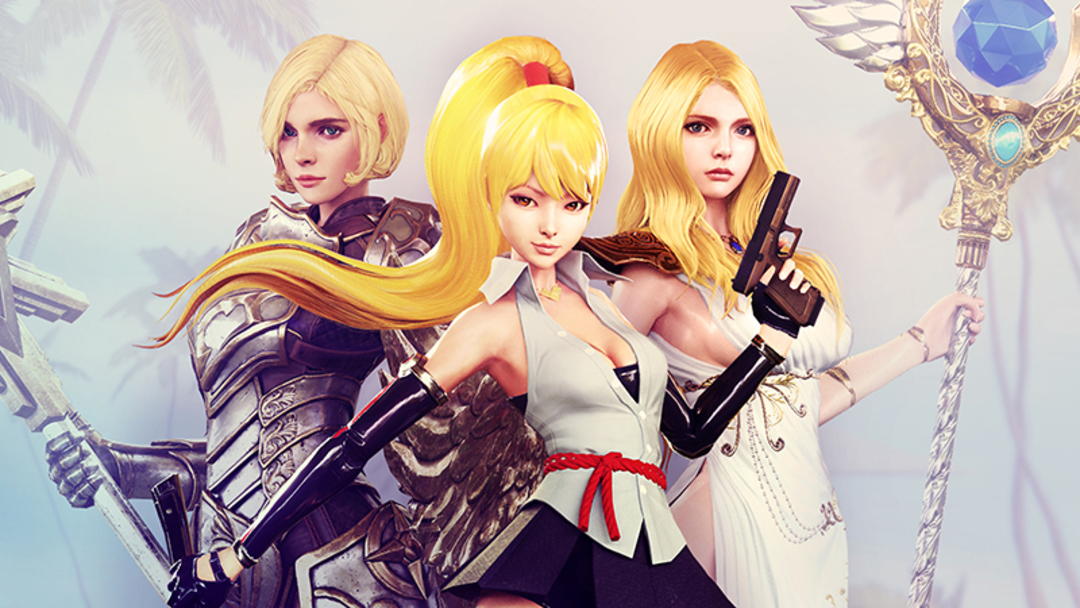Neoverse is a good-looking turnbased deck-builder with a roguelite framework, but is it all shiny sci-fi girls or is there a substantial strategy game underneath? The Finger Guns Review:
I think you’d be forgiven for finding it a little tricky to work out what Neoverse is. Pretty girls, fan-service angles, turn-based battles, and a lot of numbers – it looks a bit like a lot of things, but it’s probably not what you think. I’ll help of course. Behind the razzle of the shiny fighting girls diving about, Neoverse is actually a deck-building roguelite where they stand still most of the game, and the procedurally-generated levels have been replaced by randomised battles (still different every time). Your task is to make runs against a set number of enemy engagements and bosses, and see how far you can get, all the while earning new cards, money and skills that you’ll then lose after your inevitable demise. It’s also quite complex (in a good way if you get into it), and requires a bit of experimentation to really see the benefit of some of its systems.
Neoverse is exceptionally simple in presentation – just a few characters, a handful of battle screens and no real story to comment on whatsoever – but it makes up for this with the sheer complexity of its rules and card powers. If card deck battle games frustrate the hell out of you, then give this one a wide berth, but for everyone still here after ‘deck-building roguelite’, let’s shuffle and see what’s on the cards.
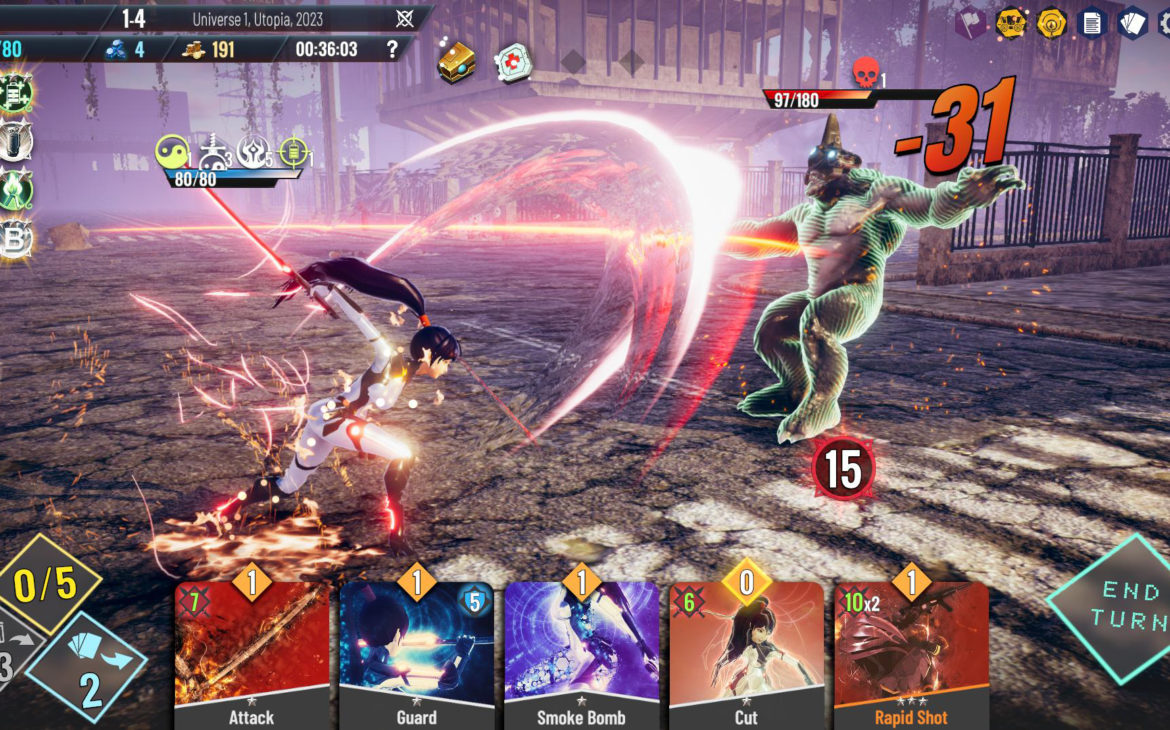
I’d normally start with a dive into the story, but for Neoverse I have not been able to find one anywhere. There is a tiny opening crawl on the title screen that reads like it’s been translated by Google. The Neoverse refers to a multiverse of time and space, achieved ‘after much fiddling’ by humankind. A setting then, at a push, for battles that include knights, robots, mythical monsters, and everything in between. No clue what you’re fighting for or about but there it is.
There are three leads, cookie cutter shiny future girl Naya, knight girl with armour that wouldn’t help in a fight Clare, and generic angel summoner girl Helena. Each is presented with a series of battles to get through, but there is never any explanation as to what the ultimate purpose of these battles is. There is no personality given to any of them and no plot to be found. They are fighting and they have to beat the bosses, that’s really about as far as it goes. I rate a good story or atmosphere highly, so I found the lack of anything in this department to be a very large barrier to engaging with the game to any meaningful depth.
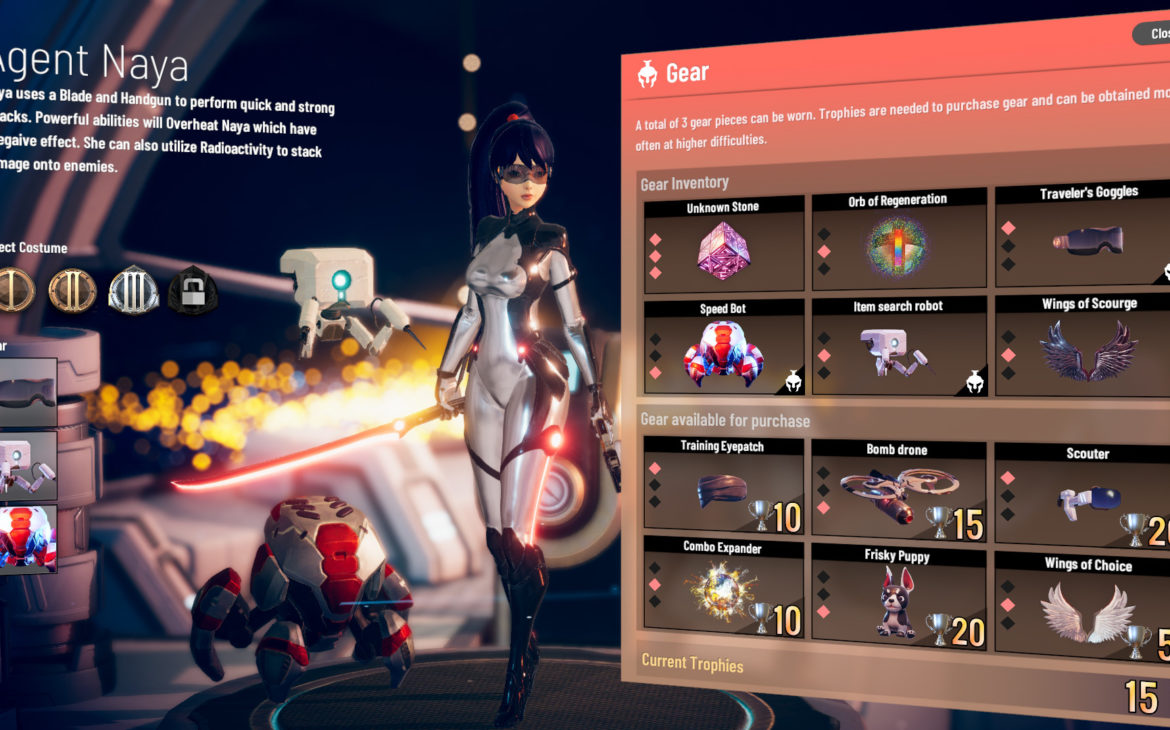
Thankfully on the card deck gameplay side, Neoverse is a much stronger game than it has any real right to be. The setup requires you to take your chosen warrior through a finite number of random battles and bosses, earning gold, skills and stronger cards along the way. Each battle can be a Normal type, or an Elite with harder enemies and greater rewards. When you select your warrior, you can choose from decks of cards with physical moves or more arcane and magic-fuelled ones, and even some really interesting vampire or draining types, and this deck will stay with you for that entire run. There are also a couple of different modes such as bounties in Hunter mode, or the more difficult Challenge mode, but they all amount to the same thing – a series of turn-based battles.
Apart from a number of shops and menu screens, the battle screen is where the bulk of Neoverse is played out. You’ll stand off against enemies on the right-hand side of the screen, and you’ll notice dozens of icons and numbers clustered around you. Dealt a hand of five cards, you can play as many as you have mana to use, usually five points per turn. Each and every card has a cost to you, an effect (be that buff or attack), and a colour; blue for defense which you play to increase your armour, red for attacking enemies, purple for buffs and skills, and special yellow cards for turn-length or battle length buffs.
There’s a lot of ways to play, and herein lies the strength of Neoverse. You could play as simply as using the cards to damage, buffing yourself and hoping for the best, and you might get through a few fights. But not to the end of a run. For that you need to learn a lot of other systems. Learning those systems is hampered by a tutorial that is basically just a Youtube video, but I will try my best to give you the flavour.
For example, you can pull off a combo by playing the blue, red and purple cards in your hand in a certain colour order. It’s not always possible, either because your hand is lacking or the combo requirements would leave you open to attack, but if you manage it, the combo bonus is that the next attack card played hits for double damage.
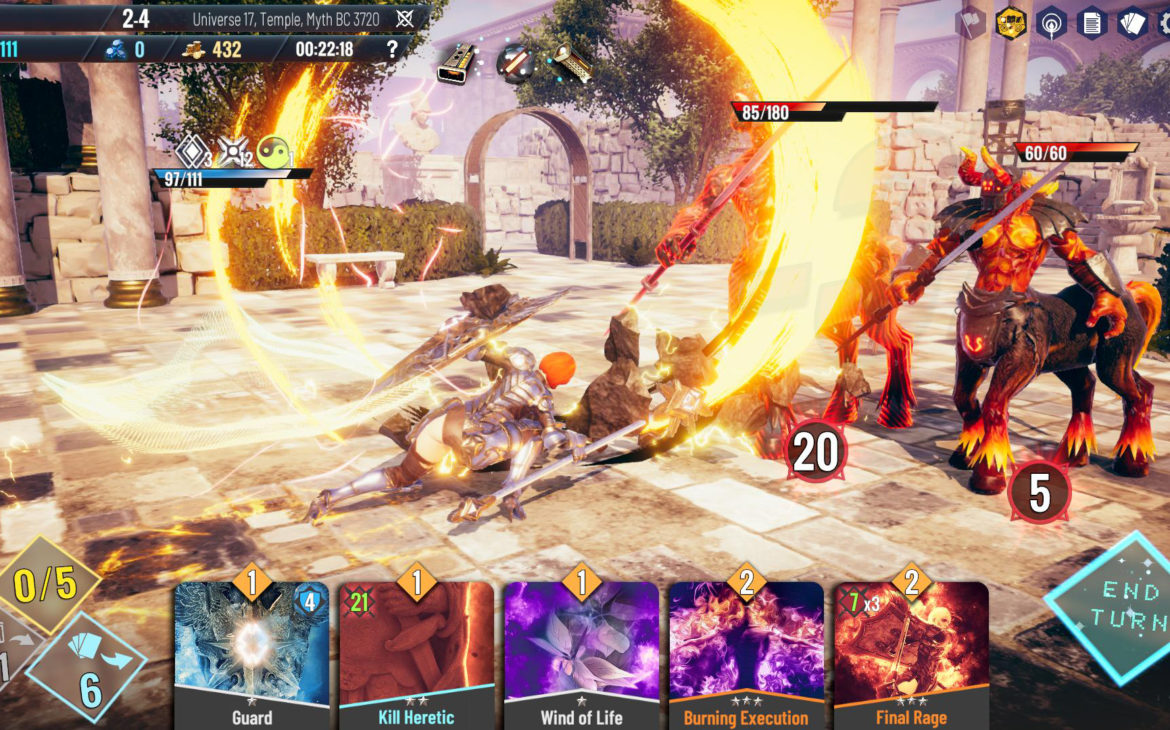
There are a lot of little quality-of-life data points all over the screen that are essential to finding your way in battle and enhancing your strategy. The most useful is that you can see the next move the enemy is going to make every single turn, thereby allowing you to plan accordingly; should they show they are going to attack, you can buff, or if they are going to enhance their armour, you can get your attacks in now. Your health bar shows you the amount of damage you will sustain on the enemy turn, allowing you to buff armour to mitigate the damage. Additionally, if you buff the exact amount, you can pull off a parry, stunning the enemy and giving you a free damage turn. Same with damage to enemies – precision-reduce their health to exactly zero without any overkill, and you get a bonus there too.
There are plenty of other buffs and card specific powers to get to grips with, (over 300 which is far too many for this review), but they are all valuable in their own way, and require a bit of experimentation to really see the gains to be made from each strategy. The physical builds are simpler to begin with, but arcane builds start to hit very hard, and make you feel much more powerful. It’s possible as you progress you could even feel they are overpowered, but that’s a problem for someway down the line.
There is a whole mechanic around building up different stats in your character and your enemies. You can build up radioactivity in an enemy, hurting them extra on every turn, or you can recover your health based on the amount of faith you have built up yourself. Naya overheats, which can cause debuffs, but with the right card, can turn that overheat number into damage output. It’s a tight mix of complicated but interesting and complementary systems that will give strategy-heads some really interesting fights. There are ways to beat bosses from a position of almost no health and ways to do battle after battle without taking a single hit.
And the best thing is that with all that strategy, the luck factor of what cards you get dealt is actually parsed down to a minimum.
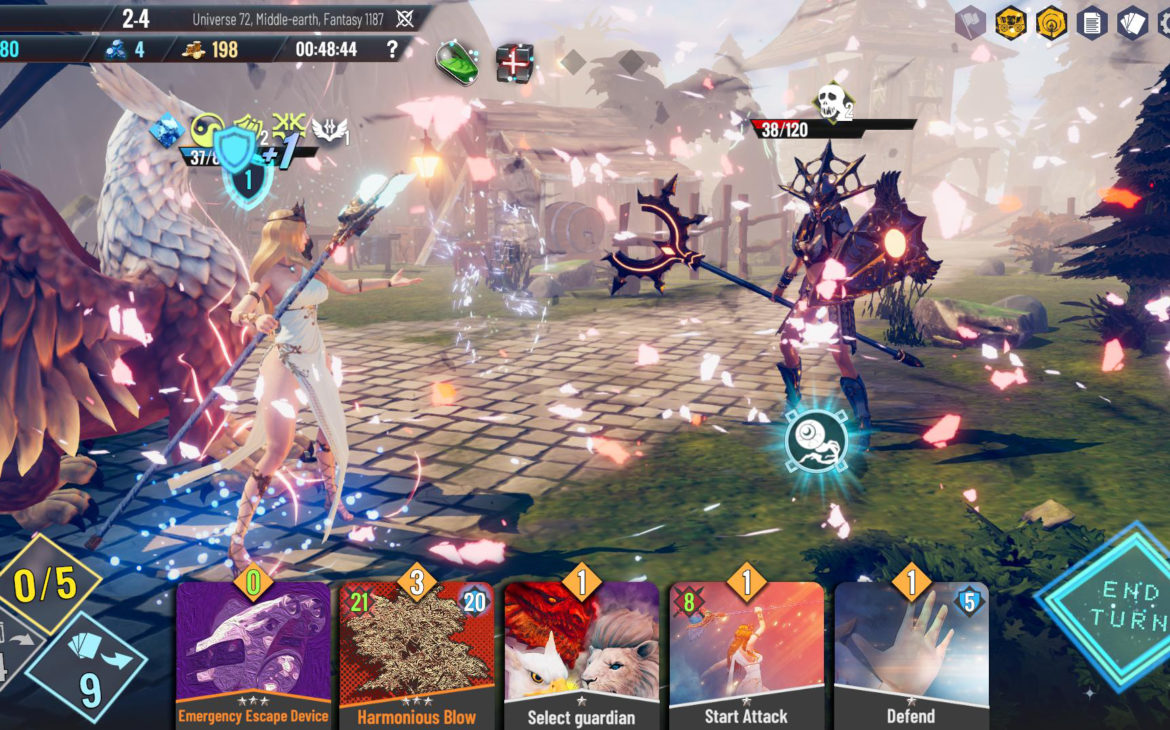
Outside of each individual battle, you’ve also got to play so that you retain health for the overall run. A lot of the healing elements are stuck behind low level cards and buffs, which can make healing hard or at least really slow. You have the same level health going into battle two as you lost in battle one, and that has to last you as many battles as it takes to get a heal. Sustaining damage on weak enemies is a no-no, you have to parry effectively as much as possible, if you want to even have a hope of reaching and beating a boss stage. On Adventure mode at least, once you complete a boss, your max HP is restored. This can lead to some strategic health-sacrificing tactics, where you might employ cards in the boss battles that damage you and the enemies alike, knowing that you only need to survive.
In between each battle you can use the gold and skill points you earn to buy cards and mana/health buffs that will make getting to the end of the roguelite run that much more achievable. You can often earn the ability to evolve cards by completing the elite battle requirements, making the cards double powered, or enhancing their armour output. The shop also has multiple items and high-level cards, and you’ll have enough gold to add a few to your deck every battle or two.
I say roguelite, because although from run to run you don’t keep cards, money or skills, you do earn EXP and trophies, which can be used on cosmetics and costumes, but also Gear, items you can equip imbued with buffs such as more health, extra skill points etc, or debuffs to make the game more challenging. Despite the look of this system I’m glad to report I didn’t find any microtransactions. There are a number of high score leaderboards where you can see who can get the furthest or the best score on each mode, but at this point there is no PvP multiplayer.
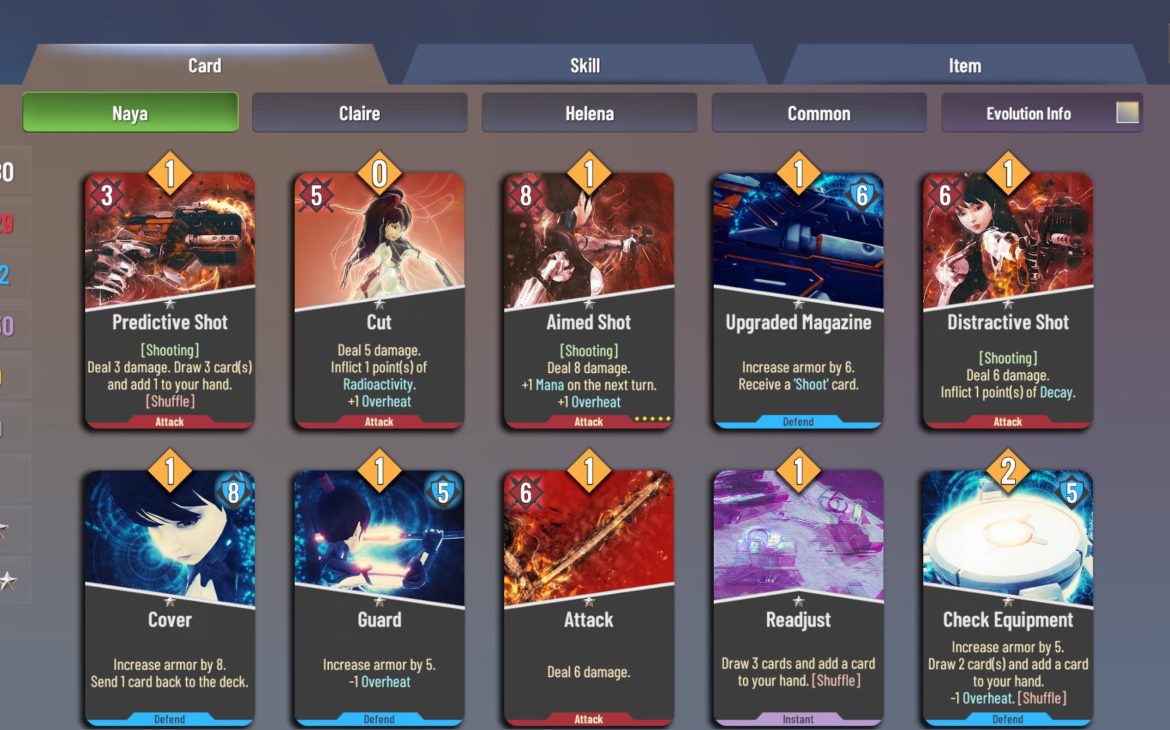
For all its great quality of life info on the battle screen, the menus and UI are not as user friendly as you’d want. You are forced to use a cursor a lot, which screams to me that this was developed for PC and that console was an afterthought. Scrolling requires you to click the menus down or hold a slider and in battle the cards constantly make you reselect via the cursor after every use rather than just being ready on the hand. These things can get annoying and detract from the otherwise good things Neoverse achieves.
Graphically, apart from a few shiny effects, the presentation is late-stage Xbox 360 era, not Xbox One or next gen in any way. Enemy designs are particularly bland and though the lead characters look nice, they lack any originality or personality. There’s a half dozen or so environments to fight in, but nothing to explore, and no meaning or explanation to any of it. Sound effects are there but they don’t add much, and there are perhaps a handful of epic theme songs on repeat throughout your fights.
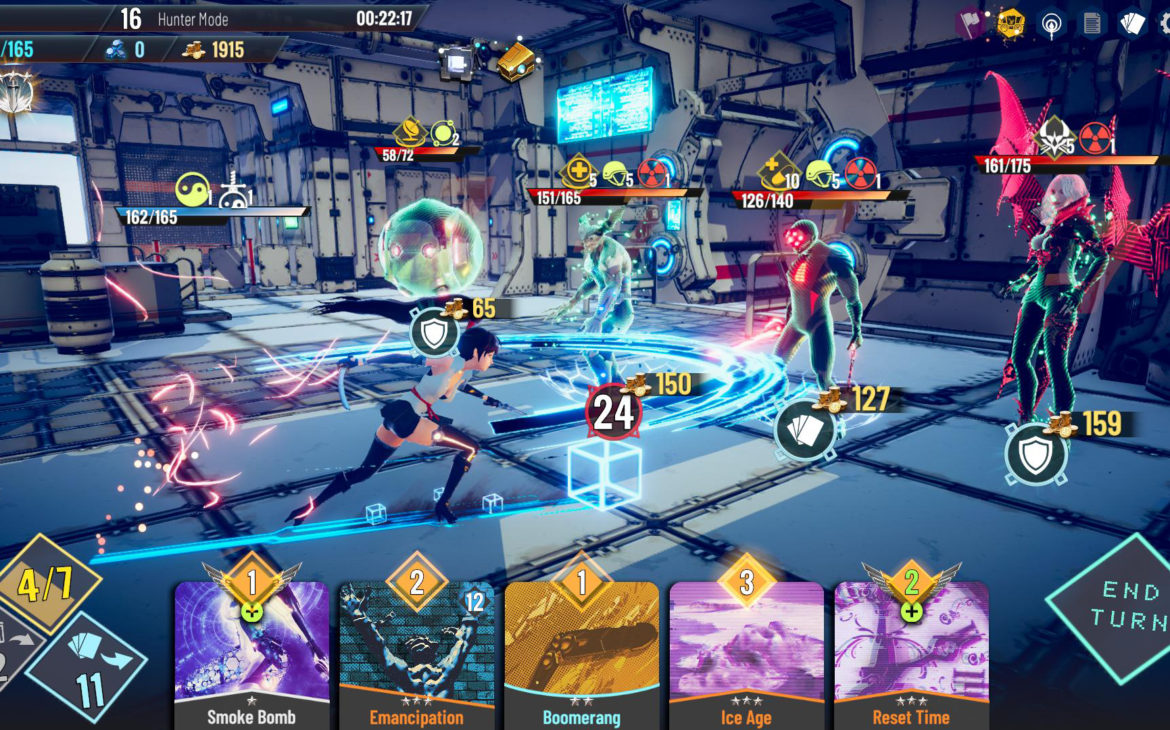
If you enjoyed Slay The Spire, Neoverse is a fun sci-fi twist on the formula. It would be easy for a card game to rest on the powers that are literally written on the cards, but Neoverse overlays the card game with so many interesting systems, it’s strategy elements will appeal to genre-fans who need a new fix. Sadly it’s other failings and lack of modes hold it back considerably.
A lack of any narrative at all leads to the game failing to engage in any meaningful way, but looking at it purely for the numbers and mechanics, some of the systems are inspired. The way parrying and buffs have been incorporated into a card game is pretty interesting, but the lack of any true variety cuts down the longevity I thought it had to begin with. It’s a game where strategy is well done, but with the severe lack of polish elsewhere, it ultimately feels like a card lost in the middle of the deck.
Neoverse is a deck-building roguelite with some impressive systems and lots of room for intricate strategy, however its presentation, lack of modes, narrative or personality really make it feel a few cards short of a full deck.

Neoverse is available now on Xbox One (review platform) and PC via Steam.
Developer: Tinogames Inc.
Publisher: Tinogames Inc.
Disclaimer: In order to complete this review, we were provided with a promotional copy of the game. For our full review policy, please go here.
If you enjoyed this article or any more of our content, please consider our Patreon.
Make sure to follow Finger Guns on our social channels –Twitter, Facebook, Twitch, Spotify or Apple Podcasts – to keep up to date on our news, reviews and features.
